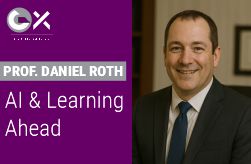
Artificial Intelligence, or AI, is starting to change how colleges and universities work. You might already see it in action — like when a chatbot answers your questions on a school website or when a program checks for copied work in essays.
AI means machines can do tasks that usually need human thinking. In schools, this includes helping students learn in ways that fit their needs, checking homework, or giving fast answers to common questions.
More schools now use AI to:
The goal is simple: make learning easier, faster, and more helpful for everyone.
But this change brings big questions. Who controls the data? Can students still learn the right way if AI does too much? And how can teachers keep up?
We will look at what’s happening now, what’s coming next, and what it means for students, teachers, and schools. AI isn’t science fiction anymore. It’s already here, and it’s shaping the future of learning.
AI is already part of daily life in many colleges and universities. It helps students, teachers, and staff work smarter and faster.
Here's how schools are using it right now:
These tools save time and help people focus on what matters most — learning and teaching.
Many schools in the U.S., UK, and other countries now test or use AI tools. Companies like Google, Microsoft, and OpenAI also work with schools to build helpful tools for education.
While AI is still new in some places, its use is growing fast. More schools are trying it to keep up with changes in how students learn today.
AI is changing how students learn in colleges and universities. It makes learning more flexible, more personal, and easier to access.
Following are some updates:
This kind of assistance helps students stay on track. Additionally, because aid is always available, learning becomes less stressful.
Students no longer need to learn in the same way or at the same pace, thanks to AI. They are free to choose the course that suits them best. This is a significant change from the previous one-size-fits-all classroom model.
AI is changing how teachers work in colleges and universities. It takes care of some tasks so teachers can spend more time helping students.
Here’s how it helps:
With help from AI, teachers can focus more on guiding and less on paperwork.
This shift also means teachers may need to learn new skills. They must know how to work with AI, check its results, and make sure it’s used the right way.
AI doesn’t replace teachers. It supports them. It helps them do their jobs better and gives them more time to connect with students.
AI is helping college staff work faster and more accurately. Many tasks that used to take hours can now be done in minutes.
Here's how it helps behind the scenes:
With these tools, staff spend less time doing the same tasks over and over. They can focus more on helping students one-on-one.
AI also helps schools spot problems early, like low attendance or missing forms, so they can act quickly.
This kind of support doesn’t replace people. It just gives them better tools to do their jobs well.
Using AI in education brings some big questions. Schools need to think carefully before adding new tools.
Here are a few common concerns:
Schools must set clear rules about how AI is used. They should talk with students and teachers before making big changes.
AI can help, but it must be used with care. Being open and fair is key to building trust.
AI will keep growing in schools and colleges. Planning ahead can help teachers and students get the most out of it.
Here are a few areas where AI could play a bigger role:
To use AI well, schools need a clear plan.
They should:
The future of learning with AI depends on smart choices made today. Clear goals and strong teamwork can make AI a helpful part of education.
AI is transforming education, learning, and work in colleges and universities. It makes school administration run more efficiently, allows teachers more time to support their classes, and helps students learn in ways that work best for them.
However, the application of AI also raises important issues, such as how to ensure that student data is handled equitably and securely. As AI tools advance, institutions must make meticulous plans, establish clear guidelines, and provide adequate training for all staff. AI can be a strong assistant, not a substitute, for the individuals who contribute to the excellence of education if it is used wisely. AI is playing a significant role in the learning of the future.
No comments yet. Be the first to comment!
Your email address will not be published. Required fields are marked *